Chicago in books: readers' picks
From mid-century poverty to contemporary love stories via an account of the 1893 World’s Fair, here is a roundup of readers’ top Chicago literature. Add your own thoughts below the line
- Reading American cities: Chicago in books
- What cities or places would you like to see covered next? Tell us in the comments
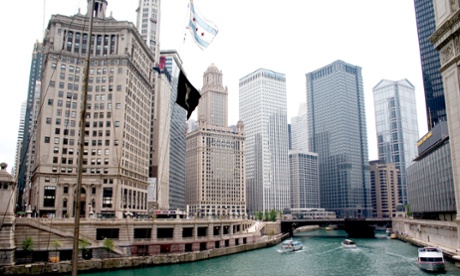
It’s a city of gangsters, a cradle of the blues, but if you want to explore Chicago there’s no better place to start than with its literature. The Windy City shaped the imagination of writers from Ernest Hemingway to Saul Bellow, from Philip Roth to Philip K Dick. Charlotte Jones laid out a few key coordinates when she described Chicago as “the unexpected cultural centre of European modernism” and asked you to tell us your favourite books about Chicago. We’ve assembled the best recommendations, but feel free to keep on adding the books which capture the spirit of Chicago in the comments section below.
1. Native Son by Richard Wright (1940)
Native Son tells the story of young Bigger Thomas, a black American living in poverty and crime on the south side. An immediate hit when it first came out, selling 250,000 copies within three weeks of publication, this protest novel tackles the social conditions resulting from poverty like few others.Gary Daily said: “The poetry in the blues, one of Chicago’s most profound hand-me-down gifts to the world, should not be missed. BB King, Howlin’ Wolf, Muddy Waters came out of the South to Chicago’s south side and music was changed forever. And the same course was followed by Richard Wright, the author of one half of a masterpiece, Native Son.”
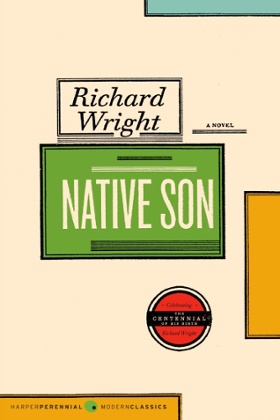
In quotes from the book:
Violence is a personal necessity for the oppressed ... It is not a strategy consciously devised. It is the deep, instinctive expression of a human being denied individuality.
They hate because they fear, and they fear because they feel that the deepest feelings of their lives are being assaulted and outraged. And they do not know why; they are powerless pawns in a blind play of social forces.
2. The Studs Lonigan trilogy by James T Farrell (1932-35)
This book comprises the three novels James T Farrell wrote at the time of the Great Depression: Young Lonigan (1932), The Young Manhood of Studs Lonigan (1934) and Judgment Day (1935). The trilogy recounts the life of Studs Lonigan, from youth to death, charting his decline from a kind-hearted, ambitious teenager to a broken alcoholic, overwhelmed by material and spiritual poverty. Swelter commented:
No matter how gritty the milieu, stories set in New York City always seem to have a touch of glamour about them, albeit often out of reach or illusory. Chicago seems to inspire more consistently tough-minded tales. The Studs Lonigan Trilogy by James T Farrell is a great novel sequence set in the lower-class Irish-Catholic community in the 1920s and 30s.
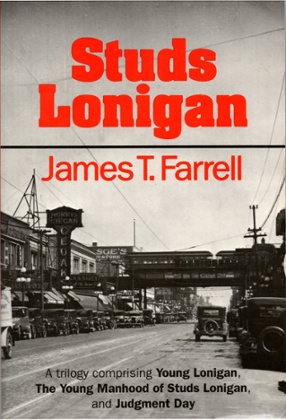
In quotes from the book:
He had come to America, haven of peace and liberty, and it, too, was joining the slaughter, fighting for the big capitalists. There was no peace for men, only murder, cruelty, brutality.
So long, Lee. Give our regards to the Kaiser. And tell him there’s a few boys on 58th Street who’ll throw a party for him if he’ll drop around.
They served the rich, and tried to think that they were rich.
Chicago isn’t just about gritty realism. For phobette, The Time Traveler’s Wife allows the reader “to see the city in a more romantic light”. Niffenegger’s debut novel mixes sci-fi and romance as it tells the story of a Chicago librarian called Henry, who suffers from a genetic disorder which causes him to jump backwards and forwards in time. It was also recommended by Phil Hanrahan, Emma Hislop and Yas W.
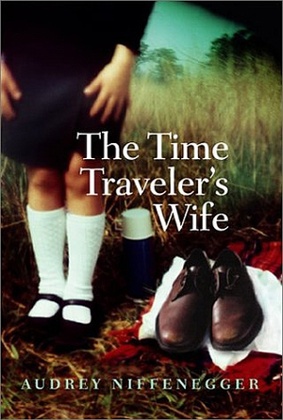
In quotes from the book:
Chicago has so much excellent architecture that they feel obliged to tear some of it down now and then and erect terrible buildings just to help us all appreciate the good stuff.
Outside it’s a perfect spring night. We stand on the sidewalk in front of our apartment building, and Henry takes my hand, and I look at him, and I raise our joined hands and Henry twirls me around and soon we’re dancing down Belle Plaine Avenue, no music but the sound of cars whooshing by and our own laughter, and the smell of cherry blossoms that fall like snow on the sidewalk as we dance underneath the tress.
4. A Raisin in the Sun by Lorraine Hansberry (1959)
This classic inspired an excellent Sidney Poitier film and is still winning accolades on Broadway, but reading the original play is a delight. Hansberry tells the story of Walter Lee, a black chauffeur in the south side of Chicago who is hungry for hope and charts the struggles of his family. The title comes from Langston Hughes’s poem Harlem (“What happens to a dream deferred? / Does it dry up / like a raisin in the sun?”). According to Camaradeau, it was the “first book that sprang to my mind ... a late product of the Harlem Renaissance-esque movement ... An absorbing story of racial tension and family struggle on the south side.”
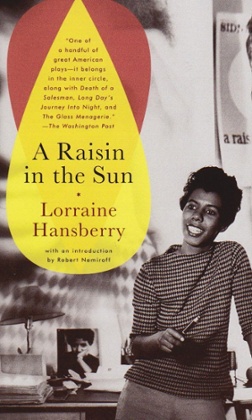
In quotes from the book:
Beneatha: You didn’t tell us what Alaiyo means ... For all I know, you might be calling me Little Idiot or something.Asagai: It means ... It means One for Whom Bread – Food – Is Not Enough.
At times it will seem that nothing changes at all ... and then again ... the sudden dramatic events which make history leap into the future. And then quiet again. Retrogression even. Guns, murder, revolution. And I even will have moments when I wonder if the quiet was not better than all that death and hatred.
Something always told me I wasn’t no rich white woman.
5. Gwendolyn Brooks
There’s usually one author whose name leaps from your recommendations – this time it was Gwendolyn Brooks. The first African-American to win the Pulitzer prize (1950) and to be appointed to the American Academy of Arts and Letters, she reached the literary stratosphere with her second collection, Annie Allen, a sequence of poems about a black girl growing up in Chicago. Her reputation as a poetovershadowed her only novel, Maud Martha (1953) – but you should read it now, says ID695199. Her work was also recommended by Gary Daily,Jasmine Davila and Babadhalgarag.
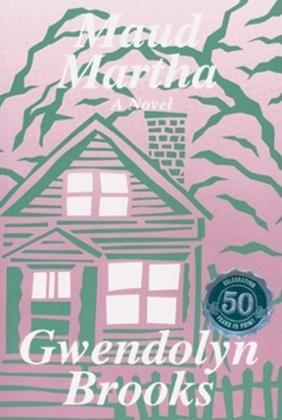
In quotes from the book:
She was afraid to suggest to him that to most people, nothing “happens”. That most people merely live from day to day until they die. That, after he had been dead a year, doubtless fewer than five people would think of him oftener than once a year. That there might even come a year when no one on earth would think of him at all.
What she wanted was to donate to the world a good Maud Martha. That was the offering, the bit of art, that could not come from any other. She would polish and hone that.
6. Studs Terkel’s Chicago (1986) and his oral histories
Studs Terkel, radio legend and oral historian, has published several celebrated oral histories – Working, Race, Coming of Age, Hard Times – all of which are essential to understanding 20th-century America. Terkel, who took his nickname from James T Farrell’s character, is considered a “master chronicler of American life in the 20th century, veteran radical and vibrant soul of the midwestern capital of Chicago”. “To register him as ‘writer and broadcaster’ would be like calling Louis Armstrong a ‘trumpeter’ or the Empire State Building an ‘office block’,” wrote the Observer’s Ed Vulliamy in his obituary. On top of his essential oral histories, his book Chicago – part memoir, part celebration of the city – is a must. Recommended by Babadhalgarag, Nicole the Bitter and Glenn Taylor.
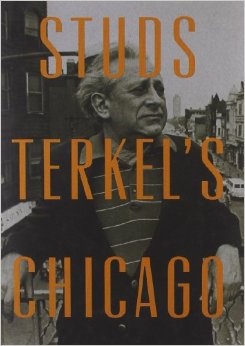
In quotes from the book:
Chicago is not the most corrupt of cities. The state of New Jersey has a couple. Need we mention Nevada? Chicago, though, is the Big Daddy. Not more corrupt, just more theatrical, more colorful in its shadiness.
They would sit and talk and tell us their hard luck story. Whether it was true or not, we never questioned it. It’s very important you learn people as people are.
I’ll never forget that Depression Easter Sunday. Our son was four years old. I bought ten or fifteen cents’ worth of eggs. You didn’t get too many eggs for that. But we were down.
7. The Devil in the White City by Erik Larson (2003)
This book is a novelistic retelling of events surrounding the Chicago World’s Fair in 1893. Larson tells the story of the architect behind the fair, Daniel H Burnham, in parallel with the life of the serial killer Dr HH Holmes, who killed his victims in a so-called “Murder Castle”. Recommended byBarry Crozier and Thaizinred.
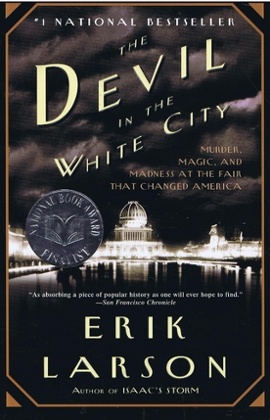
In quotes from the book:
It was so easy to disappear, so easy to deny knowledge, so very easy in the smoke and din to mask that something dark had taken root. This was Chicago, on the eve of the greatest fair in history.
Beneath the gore and smoke and loam, this book is about the evanescence of life, and why some men choose to fill their brief allotment of time engaging the impossible, others in the manufacture of sorrow. In the end it is a story of the ineluctable conflict between good and evil, daylight and darkness, the White City and the Black.
I must confess a shameful secret: I love Chicago best in the cold.
Place has always been important to me, and one thing today’s Chicago exudes, as it did in 1893, is a sense of place. I fell in love with the city, the people I encountered, and above all the lake and its moods, which shift so readily from season to season, day to day, even hour to hour.
8. Chicago by Alaa Al Aswany (2007)
This novel, written by Egyptian dentist and journalist Alaa Al Aswany, tells the story of a group of Egyptian postgraduate students at the University of Illinois exploring their relationships and the difficulties they face in the city. It depicts the racism of post-9/11 Chicago as well as the corruption of the political regime back in their home country. A good novel both for an unusual take on the city and America and for a fascinating insight into Egypt before the Arab spring. It was recommended by TripFiction.
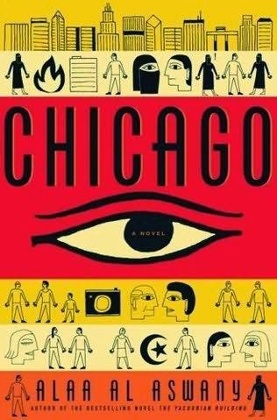
In quotes from the book:
Many do not know that chicago is not an English word but rather Algonquian, one of several languages that Native Americans spoke. In that language chicago meant ‘strong smell’.
9. Sister Carrie by Theodore Dreiser (1900)
The ultimate story of the American dream, as pursued by a young girl who moves from the country to Chicago. According to Robert McCrum it’s one of the 100 best novels written in English. “In some ways it’s crude and heavy-handed, blazing with coarse indignation, but in its day it was, creatively speaking, a game-changer,” he says. Sinclair Lewis, the US’s first Nobel laureate, said that it “came to housebound and airless America like a great free Western wind, and to our stuffy domesticity gave us the first fresh air since Mark Twain and Whitman”. Readers Benjamin Dreyerand Emma Hislop recommended it.
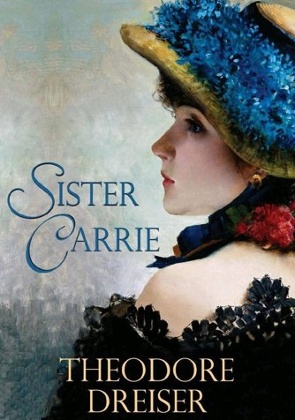
In quotes from the book:
When Caroline Meeber boarded the afternoon train for Chicago, her total outfit consisted of a small trunk, a cheap imitation alligator-skin satchel, a small lunch in a paper box, and a yellow leather snap purse, containing her ticket, a scrap of paper with her sister’s address in Van Buren Street, and four dollars in money.
A half-equipped little knight she was, venturing to reconnoiter the mysterious city and dreaming wild dreams of some vague, far-off supremacy, which should make it prey and subject – the proper penitent, groveling at a woman’s slipper.
What have we missed? Add it in the comment thread below. And while you’re at it, tell us what cities and places you would like us to tackle next. You can email your ideas and suggestions to marta.bausells@theguardian.com.
沒有留言:
張貼留言